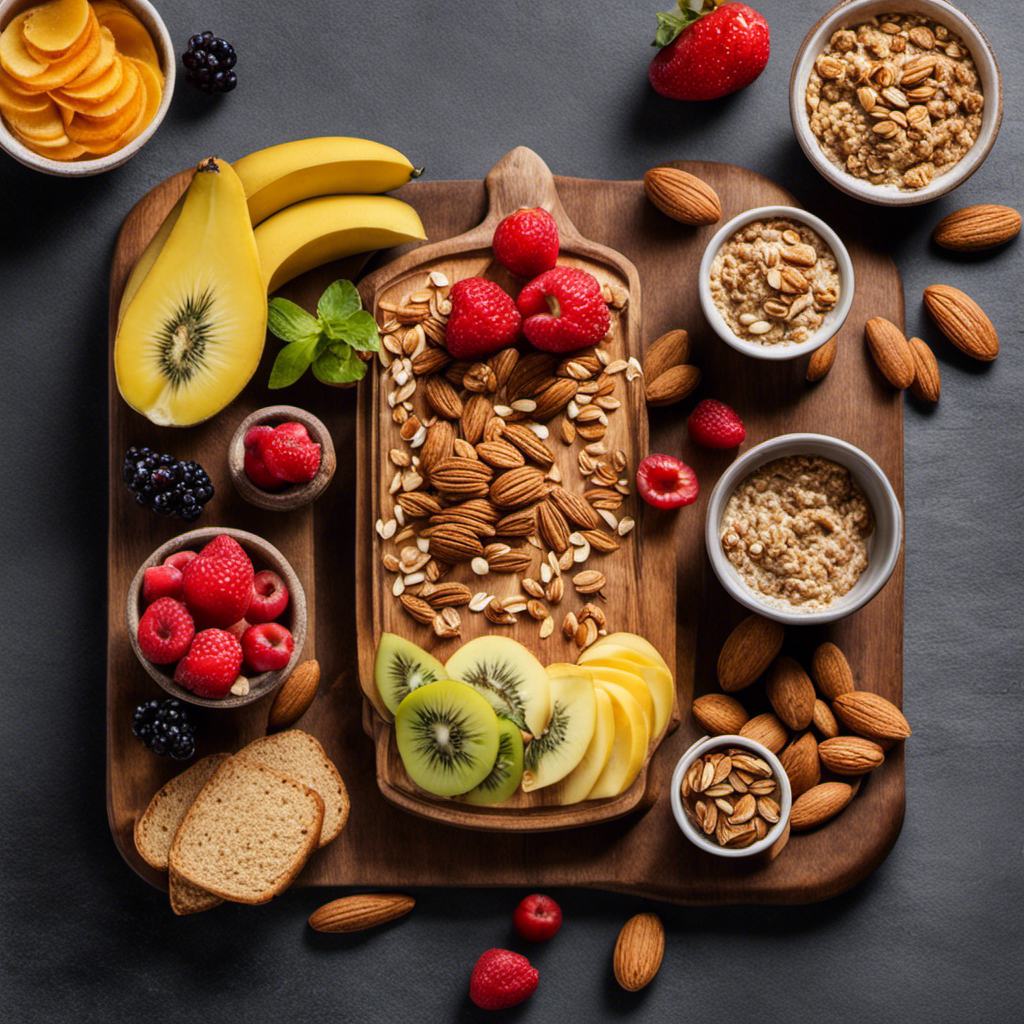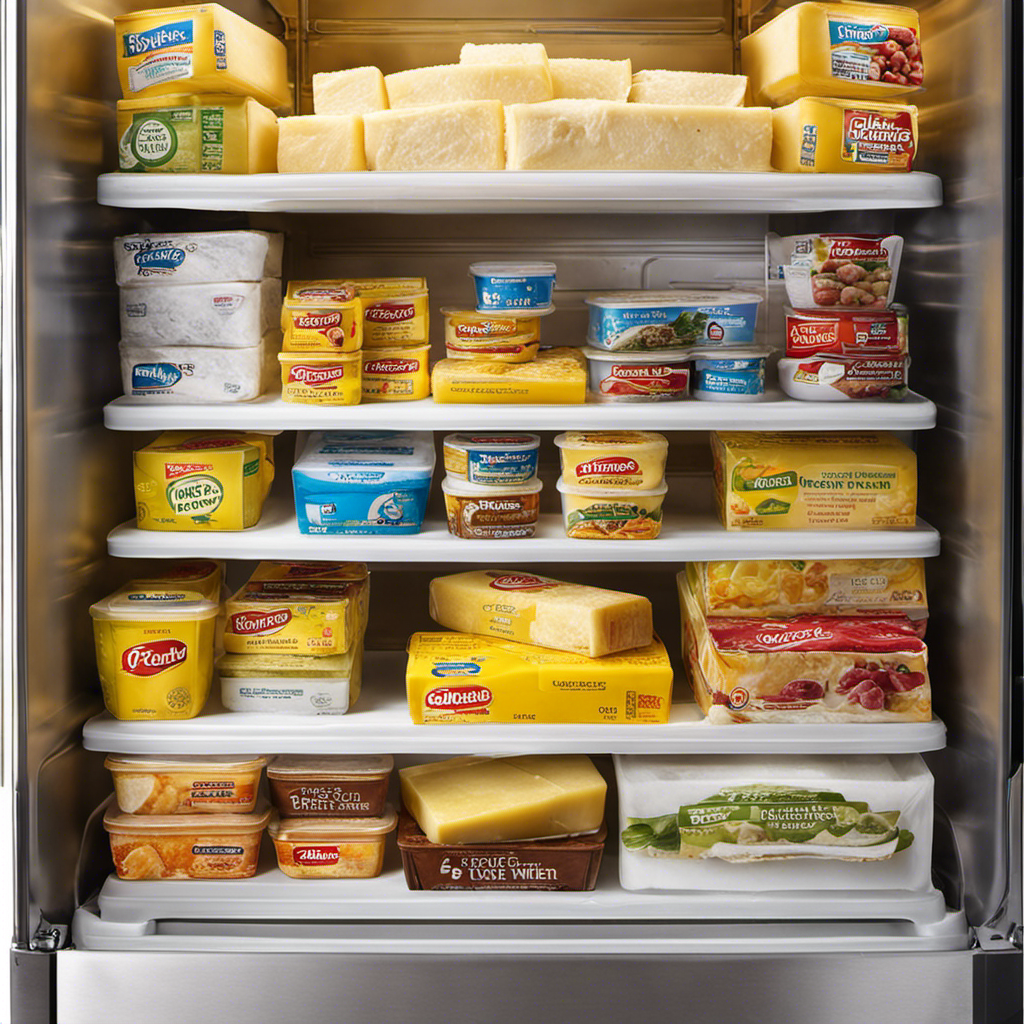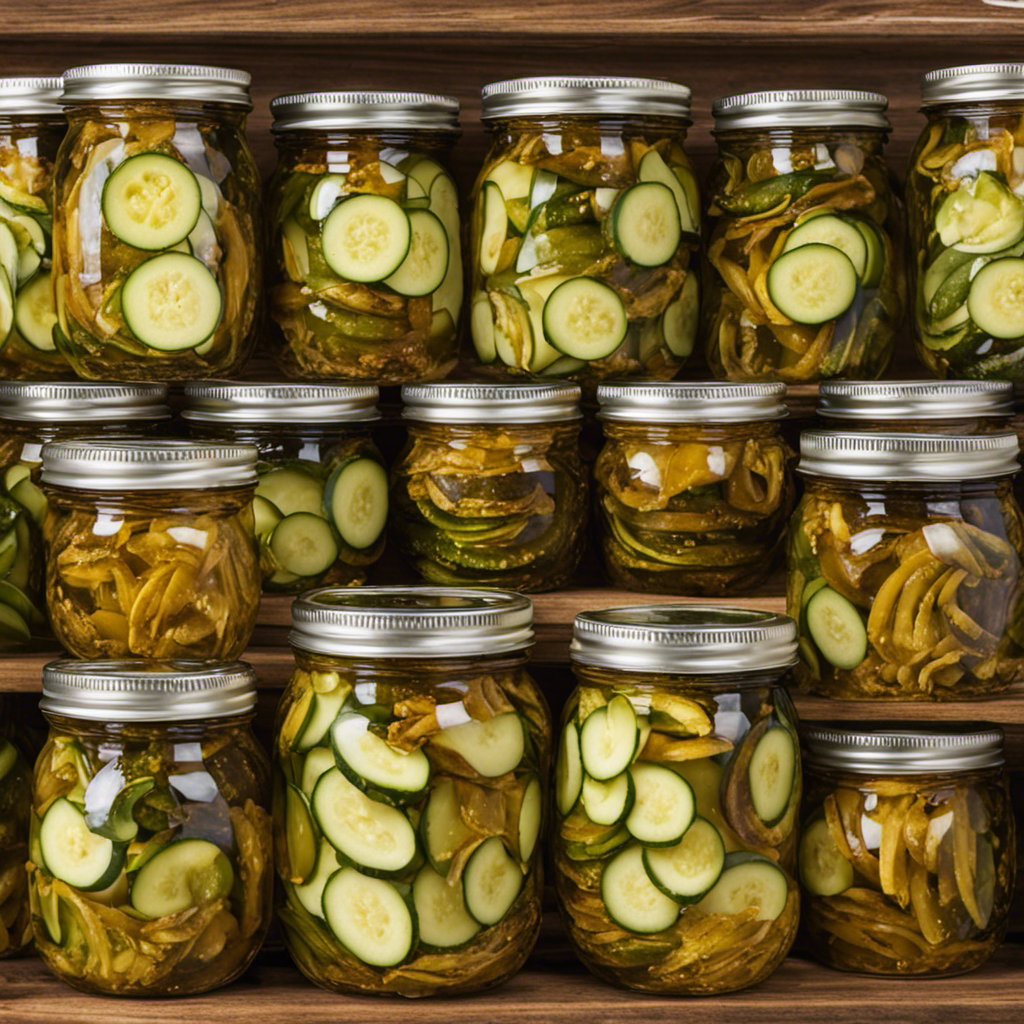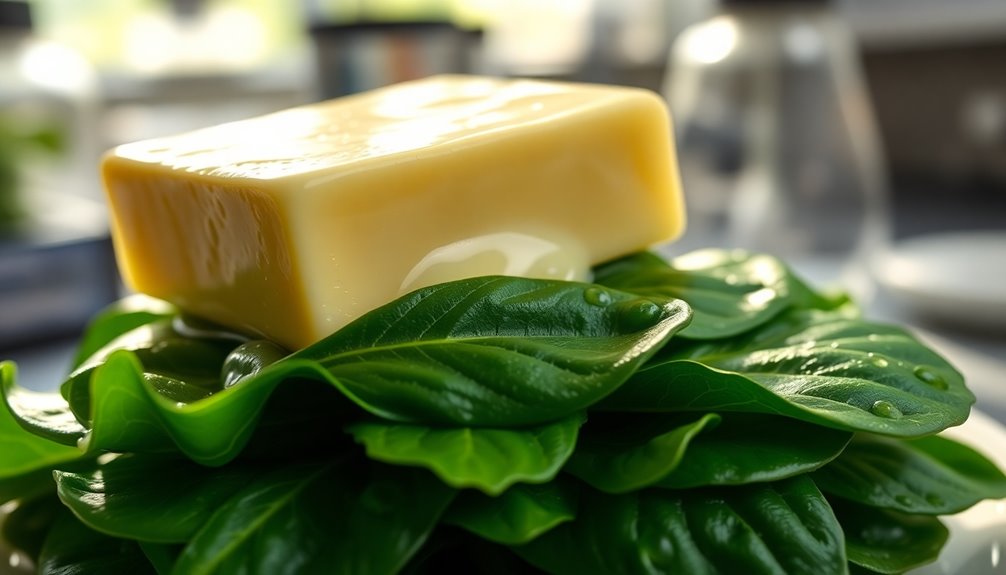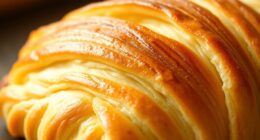Did you know that almond butter can be used in a variety of ways beyond just spreading it on bread? It can add flavor and nutrition to your meals and snacks in a multitude of ways.
In fact, almond butter can be used in baked goods, as a spread, in smoothies, salad dressings, energy balls, bars, and even savory dishes.
In this article, I will explore the many versatile uses of almond butter and provide you with some tasty recipes to try.
So, let’s dive in and discover the endless possibilities of almond butter!
Key Takeaways
- Almond butter can be used to enhance the flavor and add a creamy texture to baked goods and sweet treats such as cookies, muffins, and pancakes.
- It is a versatile ingredient that can be used as a spread or dip, replacing traditional spreads in sandwiches or paired with fresh fruit slices for a nutritious dip.
- Almond butter can be incorporated into smoothies, shakes, and breakfast dishes like coffee and oatmeal, providing extra protein and healthy fats while enhancing the taste.
- It is also a great addition to salad dressings, sauces, and dips, adding a rich and nutty taste, as well as being a versatile ingredient for creating various dressings and sauces.
Almond Butter in Baked Goods
Almond butter can be a delicious and nutritious addition to your favorite baked goods, such as cookies and muffins. It not only enhances the flavor but also adds a creamy texture to these treats.
One great way to use almond butter is by incorporating it into pancakes. By adding a spoonful or two of almond butter to your pancake batter, you can create a nutty and rich flavor profile that is sure to impress.
Additionally, almond butter can be a great addition to homemade granola. Simply mix it with oats, nuts, and honey, and then bake it in the oven until crispy. The almond butter adds a wonderful depth of flavor and helps bind the ingredients together.
Almond Butter as a Spread
Spread this creamy nutty goodness on your favorite toast or bagel for a delicious and healthy breakfast. Almond butter is not only a great spread for breakfast, but it can also be used in other ways to enhance your meals.
Here are three ways you can enjoy almond butter:
-
Almond Butter as a Dip: Pair almond butter with fresh fruit slices like apples or bananas for a nutritious snack. The creamy texture and nutty flavor of almond butter complement the sweetness of fruits, making it a perfect dip for a quick and satisfying treat.
-
Almond Butter in Sandwiches: Instead of using traditional spreads like mayonnaise or mustard, try spreading almond butter on your sandwiches. It adds a rich and unique taste that pairs well with both sweet and savory fillings. Whether you’re making a turkey and almond butter wrap or a peanut butter and jelly sandwich with a twist, almond butter can take your sandwiches to the next level.
-
Almond Butter in Salad Dressings: Mix almond butter with a few simple ingredients like lemon juice, olive oil, and honey to create a creamy and flavorful salad dressing. The nuttiness of almond butter adds depth to your salads and can elevate even the simplest of greens.
Almond Butter in Smoothies and Shakes
Add a scoop of this creamy goodness to your favorite smoothie or shake for a protein-packed and flavorful boost. Almond butter is not only a delicious spread, but it can also be a versatile addition to your morning coffee or oatmeal. The rich and nutty flavor of almond butter pairs perfectly with the earthy taste of coffee, giving you a unique and indulgent experience. If you prefer a warm and comforting breakfast, stirring almond butter into your oatmeal adds a creamy texture and enhances the overall taste. It’s a great way to add extra protein and healthy fats to your morning routine. So why not give almond butter a try in your next coffee or oatmeal bowl for a delightful and nutritious twist?
Here is a table showcasing the benefits of incorporating almond butter into your coffee and oatmeal:
| Almond Butter in Coffee | Almond Butter in Oatmeal | |
|---|---|---|
| 1 | Adds richness and depth to the flavor | Provides a creamy texture |
| 2 | Boosts protein content | Enhances the overall taste |
| 3 | Contains healthy fats | Adds nutritional value |
| 4 | Creates a unique and indulgent experience | Offers a satisfying and filling breakfast |
As you can see, almond butter can elevate your coffee and oatmeal, making them even more enjoyable and nutritious.
Almond Butter in Salad Dressings and Sauces
You’ll love how almond butter enhances the flavor of your salad dressings and sauces with its rich and nutty taste. Here are three ways to incorporate almond butter into your culinary creations:
-
Marinades: Almond butter can add a delightful depth of flavor to your marinades. Its creamy texture and nutty notes complement a variety of proteins, such as chicken, tofu, or even vegetables. Simply whisk together almond butter, soy sauce, garlic, and a splash of lime juice for a delicious marinade that will elevate your dish to new heights.
-
Dips: Almond butter can be used as a base for creamy and flavorful dips. Whether you’re hosting a party or just looking for a tasty snack, try blending almond butter with Greek yogurt, lemon juice, and herbs like dill or parsley. This savory dip pairs perfectly with fresh veggies or whole-grain crackers.
-
Sauces: Almond butter can lend a velvety texture and nutty taste to your sauces. From Thai-inspired peanut sauces to creamy almond dressings, there are countless possibilities. Mix almond butter with coconut milk, ginger, and a touch of honey for a delectable sauce that can be drizzled over salads or used as a dip for spring rolls.
Now that you’ve discovered the versatility of almond butter in salad dressings and sauces, let’s explore its use in energy balls and bars.
Almond Butter in Energy Balls and Bars
Now that you know how versatile almond butter can be in salad dressings and sauces, let’s explore how it can elevate the flavor and texture of your energy balls and bars.
Almond butter is not only delicious but also a nutritious addition to your snacks. When used in energy balls, it adds a creamy richness and a hint of nutty flavor. The natural oils in almond butter help bind the ingredients together, creating a soft and chewy texture.
You can also incorporate almond butter in granola bars for an extra dose of protein and healthy fats. It adds a depth of flavor and helps to hold the bars together. Plus, almond butter is a great source of vitamin E, magnesium, and fiber, making it a nutritious choice for your protein pancakes and granola bars.
Almond Butter in Savory Dishes
Incorporating almond butter into savory dishes adds a creamy and nutty element to the flavor profile. It’s not just for spreading on toast or adding to sweet treats! Here are three delicious ways to use almond butter in savory dishes:
-
Almond Butter Pasta Sauce: Mix almond butter with garlic, soy sauce, and a touch of honey to create a rich and flavorful pasta sauce. Toss it with cooked noodles and your favorite veggies for a quick and satisfying meal.
-
Almond Butter Stir Fry: Add a spoonful of almond butter to your stir fry sauce for a creamy and nutty twist. It pairs well with veggies, tofu, or chicken. Serve it over rice or noodles for a complete and delicious meal.
-
Almond Butter Dressing: Whisk together almond butter, lemon juice, olive oil, and a dash of salt and pepper to create a creamy and tangy dressing. Drizzle it over salads or roasted vegetables for a burst of flavor.
Frequently Asked Questions
Can Almond Butter Be Used as a Substitute for Peanut Butter in Baked Goods?
Yes, almond butter can be used as a substitute for peanut butter in baked goods. It has a similar texture and taste, but with different nutritional benefits. When using almond butter in baking, consider adjusting the recipe to account for differences in consistency.
How Can Almond Butter Be Incorporated Into a Vegan Salad Dressing Recipe?
Almond butter can add a creamy and nutty flavor to salad dressings. It can also be used in smoothies for an extra dose of protein and healthy fats.
Can Almond Butter Be Used as a Replacement for Oil or Butter in Savory Dishes?
Yes, almond butter can be used as a replacement for oil or butter in savory dishes. It adds a nutty flavor and creamy texture. I enjoy using almond butter in stir fry recipes and incorporating it into pasta dishes.
What Are Some Creative Ways to Use Almond Butter as a Spread Besides on Toast or Sandwiches?
What can you do with almond butter? It’s not just for toast or sandwiches! Try adding it to smoothies for a creamy boost or use it in desserts for a nutty twist. Get creative!
Is Almond Butter a Suitable Ingredient for Making Homemade Energy Bars With Other Nuts and Fruits?
Almond butter is a versatile ingredient that can be used as a base for homemade granola bars and as a key ingredient in smoothie bowls. It adds a creamy texture and nutty flavor to these recipes.
Conclusion
After exploring the versatility of almond butter, I’m left in awe of its endless possibilities.
From the rich and nutty flavor it brings to baked goods, to the creamy and smooth texture it adds as a spread, almond butter truly knows how to elevate any dish.
Whether it’s blended into a refreshing smoothie or used as a base for a savory sauce, this delectable ingredient is a must-have in every kitchen.
So next time you’re looking to add a touch of magic to your meals, let almond butter be your culinary companion.
